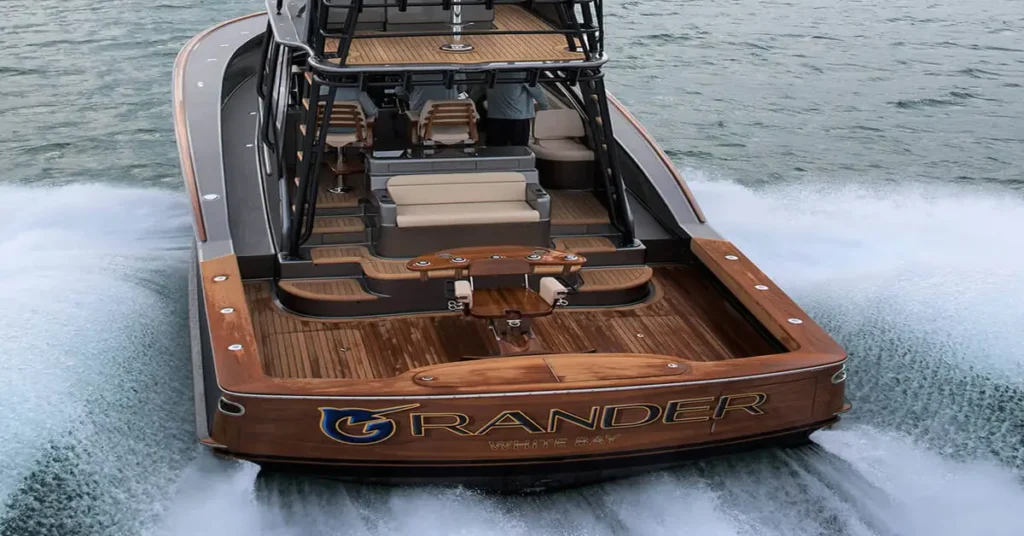Dive into the world of Bellows on a boat – he unsung heroes that keep your vessel afloat and functioning smoothly. These flexible guardians are more than just parts; they’re essential to the well-being of your boat’s internal systems.
Get ready to set sail on a journey of discovery that will amplify your boating knowledge and ignite your enthusiasm for seamless sailing adventures!
The Importance of Bellows on a Boat – My Top 3 Reasons
When I first learned about bellows on a boat, I was struck by how vital these components are. They’re the unsung heroes of a vessel’s integrity and function. Here are my top three reasons why bellows are essential on a boat.
1. Protection Against Water Ingress
One crucial function of bellows is protecting against water entering the boat. If water seeps in, it can cause significant damage. By creating a watertight seal, bellows safeguard the boat’s internal components, such as the drive shafts.
- Seal Integrity: Maintains the boat’s buoyancy.
- Component Safety: Prevents engine and accessory damage.
2. Maintenance of Boat Health
Routine bellows checks and replacements are akin to regular health check-ups. By ensuring that bellows are in good condition, I’m effectively maintaining the overall health of my boat. This leads to smoother operation and safer boating experiences.
- Operational Smoothness: Smooth sailing without unexpected breakdowns.
- Safety Assurance: Lesser risks while out on the seas.
3. Flexibility While Shielding
Bellows protect while also allowing for motion and flexibility. For parts that need to move, like the shift cable and U-joints, bellows offer the necessary flexibility while also shielding them from moisture and debris.
- Protection and Motion: Dual benefit for dynamic boat parts.
- Debris Defense: Keeps crucial moving parts clean and operational.
So, bellows may not be the most eye-catching parts of a boat, but their role is critical. From preventing water damage to ensuring safe journeys, they do deserve a bit more of the spotlight.
Understanding Bellows and Their Function

When considering maintaining a boat’s safety and performance, I pay special attention to Bellows. These critical components protect the boat’s engine and parts from water damage.
Types and Uses of Bellows
Bellows on a boat serve as flexible gaskets, safeguarding key systems against water intrusion. There are a few specific kinds of bellows:
- U-joint bellows provide a watertight seal for the universal joints on sterndrives, managing power transmission from the engine to the propeller.
- Exhaust bellows expel engine exhaust away from the boat, preventing backflow of water.
- Shift cable bellows protect the shift cable from the control box to the gearcase, allowing for smooth gear changes.
Symptoms and Consequences of Bellows Failure
Bellows failure can lead to a gamut of issues:
- Leaking can introduce water into the boat, potentially causing water in the cabin.
- You might hear noise or notice vibrations during movement, suggesting a loose gasket or crack.
- Continuous leaking can cause rust and corrosion, leading to significant damage.
Maintenance and Replacement Process
Routine maintenance helps in the longevity of bellows:
- Inspect bellows regularly for signs of wear, cracks, and leaks.
- Replacement typically involves removing the drive, using a bellows expander tool and adhesive for secure fitting.
- I follow a DIY approach if I’m familiar with the process, or consult a mechanic.
Boat-Specific Bellows Considerations
Specific factors for each boat affect bellows:
- Inboards and outboards have different bellow types compared to stern drives.
- Familiarizing myself with the user manual helps me understand the boat-specific bellows requirements, such as the right gimbal bearings or hinge pins.
Preventative Measures and Best Practices

When maintaining bellows on a boat, a proactive approach is key to long-term durability and safety. Regular check-ups, using the right tools, and recognizing warning signs can save you from costly repairs and dangerous situations.
Regular Inspection and Care
I inspect the bellows every season or every 100 hours of operation, especially focusing on areas prone to degradation, such as UV exposure and friction. Any signs of cracking, rusting, or leaks need immediate attention to prevent water from accessing the boat’s mechanical systems.
I use a flashlight and a mirror to examine those hard-to-see places and ensure nothing is amiss thoroughly.
List of inspection Points:
- Gaskets and O-rings for proper sealing
- Bolts and fasteners for tightness
- Hinge points for free movement
Choosing the Right Tools and Parts
Finding the correct replacement parts, such as genuine gaskets and O-rings, is crucial to ensuring the integrity of the seal. I always recommend using a bellows expander tool and bellows adhesive specifically designed for marine environments, as these ensure a tighter fit and long-lasting bond.
As for the tools, a socket wrench set, knife, and screwdriver set are my go-tos for smooth operation.
Essential Tools Checklist:
- Flat-head screwdriver set
- Open-end/box wrench set
- Bellows adhesive
- Bellows expander tool
Understanding the Signs of Wear and Taking Action
I’ve learned to pay close attention to vibrations or changes in handling, as these can be the earliest symptoms of bad bellows. Catching issues like water leaking or excessive wear early on means less damage overall.
If unsure, consulting the service manual or a professional mechanic is better than risking further damage or safety hazards. Remember, a small sign of wear today can lead to a critical problem tomorrow.
Action Plan for Wear Signs:
- Identify: Use clean rags to clean the area, then inspect for signs of wear.
- Consult: Look at your service manual or talk to a professional mechanic.
- Repair: Replace any worn parts using the proper tools and parts.
- Test: Check for leaks or other issues before taking the boat out after repairs.
FAQ – Bellows on a Boat

Check Out our FAQ section and explore this resource to gain insights and ensure the longevity of your boat’s critical components.
What happens if Bellows on a Boat leak?
A crack in the exhaust bellows won’t sink your boat, but it will fill your bilge and make a mess in the cabin.
How do you know if bellows on a Boat are bad?
Water in the cabin, shifting issues, loud noises while driving, and overheating are signs that your boat’s bellows might need repair.
A proper inspection is best left to a professional, but if you want to take a look yourself first, you can pin the drives to one side and then the other.
How long do bellows last on a boat?
Bellows can last a long time, approx 10 to 20 years.
Have insights or a sea-worthy tale about bellows on a boat? Drop anchor in the comments below and share your experiences with fellow mariners!



